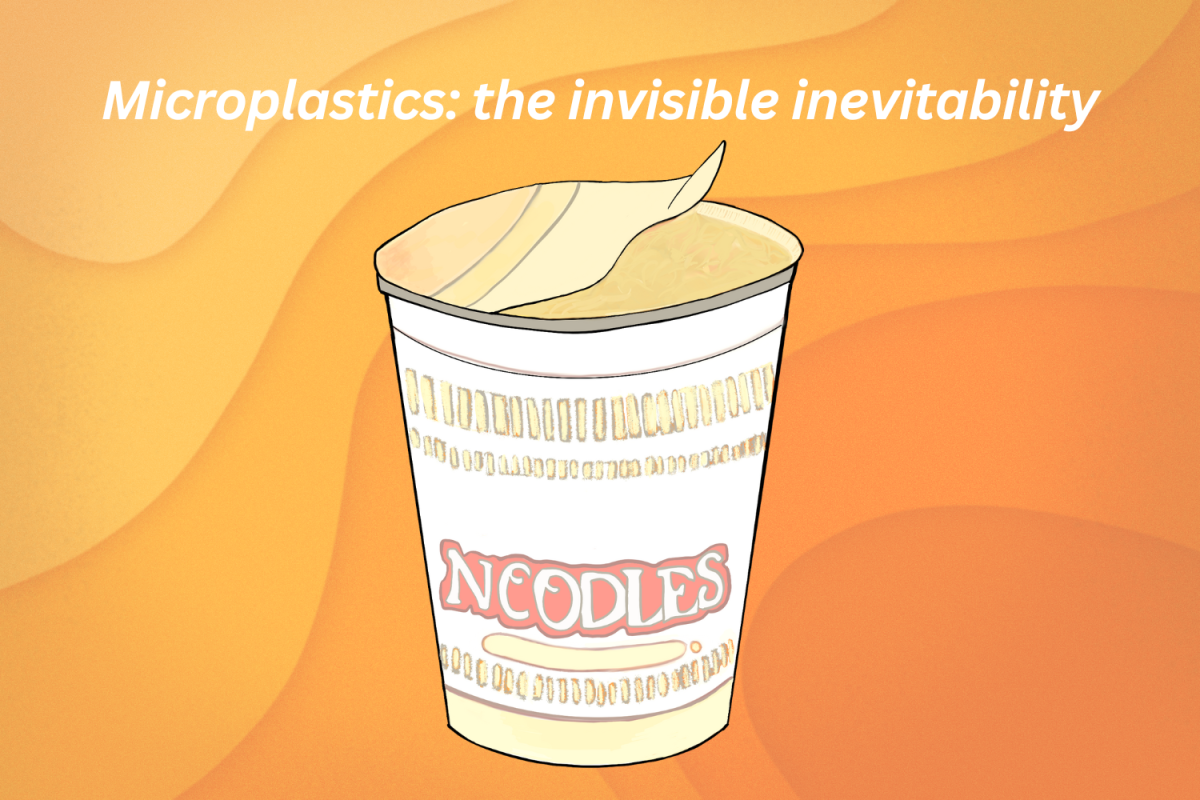Invisible to the naked eye, a silent predator tenaciously stalks our environment — it claims an immeasurably vast territory, encompassing the depths of our oceans, the expanses of our sprawling landfills and even our local grocery aisles. Spurred on by the relentless pollution of modern industries, its presence has become an inevitable reality. Though many might consider themselves safe from its grasp, this insidious invader has likely already made its mark; microplastics have invaded our bodies.
Since the global shift from glass to plastic manufacturing for countless goods in the early 1950s, plastics have been heavily relied upon by both producers and consumers in everyday life. However, human consumption of microplastics has increased as a result. Microplastics are imperceptibly small pieces of plastic that have disintegrated from larger plastics.
Plastic, a synthetic material typically produced from crude oil and other non-renewable resources, is used by producers around the world due to its cheap and flexible manufacturing process. Excessive plastic waste imbues food with microplastics, evidenced by poor packaging leaking microplastics into groceries and trace microplastics appearing in mass-produced goods. Global dependence on plastic has made the consumption of microplastics practically unavoidable for billions of people worldwide, especially in the San Francisco Bay Area. According to a study conducted by the San Francisco Estuary Institute in October 2021, an estimated 7 trillion microplastics enter the Bay Area annually through stormwater alone.
There are two main types of microplastics — primary microplastics, which are intentionally made for commercial product use, and secondary microplastics, which are unintentional byproducts of plastic breakdown. Because plastics are highly resistant to biodegradation, they simply break down into smaller plastic pieces over time. This structural tenacity ultimately results in the mass formation of microplastics throughout polluted environments.
Microplastics are incredibly difficult for the human body to filter out, proven by their presence in blood samples, lung scans and other human bodily analyses. In 2022, researchers from the Hull York Medical School in England found accumulated microplastics deep in test subjects’ lungs, which raised concerns about the abundance of plastics in our bodies.
“We’ve known for a while that microplastics are harmful to our oceans and our wildlife, but now we also have evidence of their potential toxicity to humans,” said Dr. Harit Agroia, an adjunct professor of public health at San Jose State University.
A component of many plastic products is Bisphenol A, a synthetic chemical used in plastic manufacturing that leaks into the human body due to plastic degradation. According to the Food and Drug Administration, the overconsumption of BPA can lead to health issues such as bodily hormone interference, developmental issues among young children and negative effects on both male and female fertility rates.
“It has to start with actually taking care of our waste,” senior Harry Chiu said. “We need to be actively supporting policies that protect the environment.”
Humans aren’t the only victims of microplastic overabundance. Plastic pollution in the ocean is broken down by the sun and the mechanical nature of waves, creating irregular shapes, sizes and densities of microplastics. In contaminated waters, they can become dangerous carriers for viruses and bacteria along with other chemicals that can harm both animal and human life. Microplastics also prevent growth and reproductive development among marine life, threatening the stability of marine ecosystems and potentially affecting communities that rely on seafood.
“I think there’s a key role for large organizations, especially cross-sector initiatives that work together with other industries, to raise awareness of and promote uptake of behaviors that lead to a more sustainable and resilient environment,” Agroia said.
In efforts to combat the consequences of microplastic abundance, organizations and initiatives such as the California Ocean Protection Council’s Statewide Microplastics Strategy have taken measures including stormwater infiltration projects and compliance with plastic discharge prohibitions to reduce microplastic abundance. The strategy includes plans such as outreach, education and risk thresholds and assessment to ensure not only reduction of pollution but also scientific understanding and informed future action.












































































